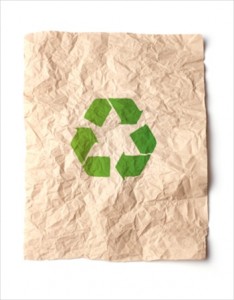Scientists Build World’s First Anti Printer
Although many schools and businesses are going digital with their operations, final copies are still printed out onto traditional sheets of paper. The process of paper recycling is far more difficult and consumes much more energy than many people imagine.
The paper first has to be sorted. It is then rid of it’s contaminants and compacted. The paper is then shredded and mixed with water to make a pulp. The pulp is washed again and refined, before being beaten into a slush. It’s then shaped and left to dry before then be converted into printer paper, newspaper and cardboard. Here’s a short clip on how our friends across the pond do it.
Traditional printers heat toner into ink particles that stick on paper. It’s only fitting that a similar heating process would be used to reverse the effect. Dr. Julian Allwood of Cambridge University has devised a way to effectively remove different types of toner from different sheets of paper. What Dr. Allwood did was shoot incredibly short laser pulses from a printer onto used paper, which in turn vaporized the toner, leaving a blank sheet of paper. These laser pulses only last milliseconds and made the paper as good as new.
Toner removal from paper is an extremely delicate process, and was not achieved without fair amount of trial and error. Using the wrong color or wavelength laser would cause the paper itself to become burnt or vaporized.
Coincidentally, the proper color laser to get the job done is none other than green. Red or blue lasers were tested to be insufficient. The first prototype of an anti-printer costs $30,000. Once it’s made to be cost effective, this new form of recycling will save the incredible amounts of energy required to recycle traditionally, and result in lower greenhouse emissions. Similarly, one sheet of paper can be reused about five times before then being shipped to a recycling facility.
It seems that improvements in various forms of technology sprout incredible new opportunities for both good and evil. Obviously this is great for businesses to cut costs, along with their impact on the environment. Trees are being saved, keeping our planet’s natural climate intact. On the other end of the spectrum, it’s not difficult to see corrupt businesses using this type of technology to alter critical documents. It’s wise to always read the fine print, but how you can you read fine print that disappears and is replaced by something else?
Comments
Tags: antiprint, antiprinter, deinking, go green, green pulses, ink removal, Julian Allwood, recycling, unprint, unprinter
Trackback from your site.



Comments (1)
maven
| #
Well, this would actually be pretty awesome if became cost effective enough to have the device at home. The amount of paper I have shredded just this year is shocking. This could potentially reduce crimes that occur as a result of sensitive information being “phished” out of the trash by thiefs. Not everyone thinks to use a shredder setting themselves up for identity theft. Of course, someone will then find a way to reactivate the old ink and see what was previously printed. Geesh!
Reply